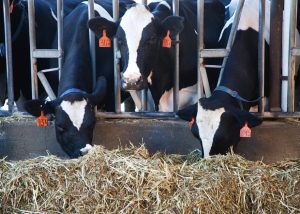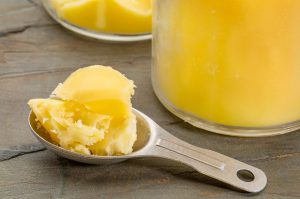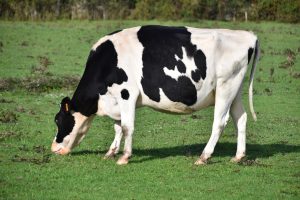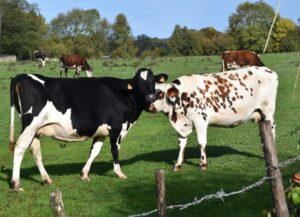Álvaro García
Maintaining body temperature within safe limits is a constant challenge for dairy cows, especially during summer. Cows generate significant internal heat through rumen fermentation and nutrient metabolism, which adds to environmental heat. When this combined load exceeds their ability to dissipate it, core temperatures can rise above the optimal 101.3°F. This condition known as heat stress initiates physiological responses that drop intake, alter behavior, and reduce milk production.
How the cow’s digestive system generates heat
A car engine offers a useful comparison, you put in fuel, and the engine burns it to make energy. Along the way, it also gives off heat, which is why your engine gets hot. A cow’s body works like that, but instead of gasoline, the cow uses grass, hay, or grain, and instead of metal pistons and spark plugs, it uses organs and metabolism. The rumen is like a big fermentation vat, full of microorganisms that break down the plant fibers the cows eat. Just like burning wood in a fireplace releases heat, fermenting plant material in the rumen in an exothermic process that releases energy as heat. And that is just the beginning. After fermentation, the breakdown products, like fatty acids, are absorbed and used by the cow’s cells. The cow’s body burns these molecules in a process called cellular respiration, which also creates heat as a by-product.
Every step of digestion involves work: chewing, swallowing, mixing food in the stomach, contracting muscles to move products along. All of this requires energy, and any time the body uses energy, it also creates heat. So in short, a cow heats up when it eats because:
- Fermentation in the rumen directly releases heat (like a compost pile getting warm).
- Cellular respiration in the cow’s body “burns” nutrients for energy producing heat.
- The muscles and processes of digestion take energy and give off heat too.
High-producing cows are the most susceptible. As their dry matter intake (DMI) increases to support milk synthesis, so does internal heat production. When ambient conditions prevent this heat from being released, cows eat less. Research has found that a rise in core temperature to 104°F reduced DMI from 45 to 31 pounds, a drop that led to milk losses of up to 14 pounds per day.
Reducing the environmental temperature
According to NASEM (2021), DMI begins to decline at 77°F and drops more sharply above 86°F. Humidity increases the severity. Collier et al. (2012) observed that cows started showing elevated core temperatures at 71.6°F when relative humidity was 45% or more. Compounding the effect, cows respond more to accumulated heat load than momentary temperature. Intake and milk yield are more closely related to the weather from the previous two days than the current day.
However, not all cows respond equally, since mid-lactation cows (100 to 180 days in milk) are the most vulnerable, with sharp reductions in feed intake and milk output. Late-lactation animals follow, while early-lactation cows, though they produce more milk, often mobilize body fat to compensate. Yet reduced feed intake does not explain all the milk loss. Research at the University of Arizona estimates that only 40 to 50% of milk yield loss during heat stress is due to lower DMI. The rest results from physiological shifts: hormonal changes, reduced digestive efficiency, and increased maintenance energy needs.
Environmental cooling remains the most effective intervention. Evaporative cooling/soaking cows and allowing airflow to evaporate the water, is highly effective. Studies at Kansas State University found that cows in four-row freestall barns with fans placed over both the feedbunk and stalls produced 98.8 pounds of milk daily, compared to 93.9 pounds for cows cooled only at the feedbunk. Doubling the fans did not yield further gains.
Sprinkling frequency and airflow also play major roles. Brouk et al. (2004) showed that five-minute sprinkler cycles (one minute on, four off) combined with 700 CFM of airflow were the most effective. Increasing airflow beyond 750 CFM did not add benefits. The key is to ensure cows are mostly dry before the next wetting cycle to maximize evaporative cooling.
Some farms use high-pressure mist systems to reduce water usage. These systems work well if they soak the skin thoroughly. Misters applying 3.4 gallons/hour provided cooling equivalent to traditional sprinklers. Systems operating at only 1.7 gallons/hour, however, were much less effective. Mist systems can also increase barn humidity, which, if not balanced by ventilation, may worsen respiratory conditions.
A newer approach involves soaker grids with large-droplet nozzles installed above feed alleys or holding pens. These grids, when combined with adequate airflow, reduce core body temperature, improve comfort, and help maintain intake and milk production while using less water than full-surface sprinkler systems. The consistent use of these systems helped cows maintain dry matter intake and milk yield during periods of elevated summer temperatures, demonstrating their practical effectiveness on commercial farms (Díaz-Royón and García. 2013).
Fuel octane vs. forage quality: a metabolic analogy
Octane in fuel is a measure of how efficiently and cleanly it burns in an engine under pressure. Higher octane fuel allows high-performance engines to run cooler and more efficiently. Similarly, forage for cows can be seen as having its own kind of “metabolic octane,” determined by factors like:
- Digestibility (how easily feed is broken down)
- Fermentation profile (rate and type of VFA)
- Heat increment(how much internal heat is generated during digestion)
- Fiber content and quality
High-quality forages, like young alfalfa, well-managed silages, or high-sugar grasses, act like high-octane fuel because they:
- Digest rapidly and efficiently!
- Produce more usable energy (e.g., propionate) with less heat.
- Allow cows to maintain performance with less metabolic stress.
- Are less bulky and fibrous, reducing the work of digestion.
Low-octane forage = hot-running engine
By contrast, poorly digestible forages, such as over-mature grass hay or high-lignin crop residues, are like low-octane fuel:
- Require more microbial fermentation.
- Generate more heat during digestion.
- Yield less usable energy.
- Stress the cow’s thermoregulatory and digestive systems.
Drinking water acts as coolant
Water is the most overlooked but vital nutrient during heat stress. With increased panting and sweating, cows cannot afford restricted access to clean, cool water. Ideal temperatures range from 63°F to 82°F, and waterers should be shaded whenever possible. Water access has direct effects on productivity.
Without hydration, cows’ risk cardiovascular strain and reduced performance. During heat stress, hydration becomes a limiting factor, just as critical as feed or cooling.
The solution to summer stress in dairy herds lies in the combination of barn cooling systems, tailored nutritional plans, and unrestricted access to fresh water. No single strategy suffices alone. When implemented together and customized to each farm’s infrastructure and climate, these practices can preserve cow health and sustain productivity through the most challenging months.
Take-home message
Heat stress in dairy cows is not just about temperature, it is a combination of metabolic load, environmental exposure, and management. Think of the cow as a biological combustion engine. Efficient cooling and clean-burning “fuel” (quality forage) are both essential to keep it running.
An integrated strategy, evaporative cooling tailored to barn design, nutritional adjustments that preserve rumen function, and unrestricted access to clean, cool water, is key to maintaining health and production during hot weather. No single intervention suffices on its own, but together they form an effective defense against summer stress.
© 2025 Dellait Knowledge Center. All Rights Reserved.









